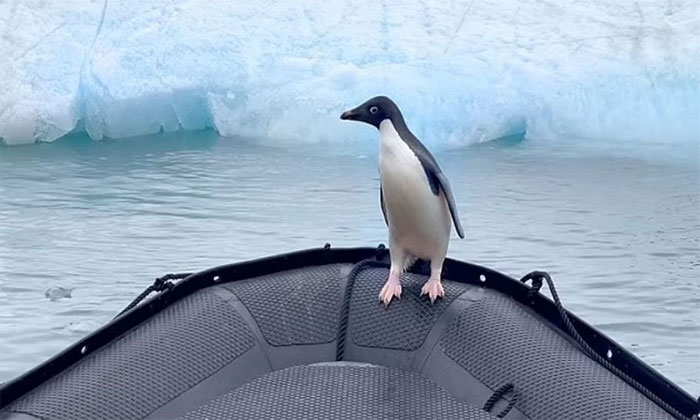The Adelie penguin escapes onto a tourist boat and is safely returned to an iceberg after a chase by a leopard seal.
The penguin escapes by jumping onto the tourist boat. (Video: Caters)
Photographer and guide Vladimir Seliverstov from Russia captured the Adelie penguin on the boat during an expedition in Antarctica. The penguin jumped onto the boat while fleeing from a leopard seal. After escaping, it wandered around and was returned to its fellow penguins on a nearby iceberg by the tourists on the boat.
“I have been photographing wildlife for over 20 years. I have never experienced anything like this before, but some of my friends have. Penguins can be very comfortable around humans, but not every individual is the same,” Seliverstov shared.

The penguin jumps onto the boat while fleeing from a leopard seal.
The Adelie penguin is the most common penguin species in Antarctica. They adapt well when there is less sea ice and enjoy favorable foraging conditions. In ice-free environments, Adelie penguins can move more freely by swimming and access food sources more easily. For penguins, swimming is a mode of travel four times faster than walking. They can be very agile underwater but quite clumsy on land, according to researcher Yuuki Watanabe at the U.S. Arctic Research Institute.
In recent decades, Antarctica has seen a steady increase in sea ice extent, while the Arctic has experienced a significant decline. For a long time, polar biologists have known that penguins tend to increase in numbers during years of sparse sea ice and reproduce poorly during periods of extensive sea ice.
Leopard seals can weigh over 380 kg and live 12 to 15 years in the wild. They are dangerous predators, specializing in eating warm-blooded animals such as other seals and birds. They can target penguins as the birds jump from the ice shelf into the frigid waters of Antarctica.

















































